Bosi Wen
RLMR: Reinforcement Learning with Mixed Rewards for Creative Writing
Aug 28, 2025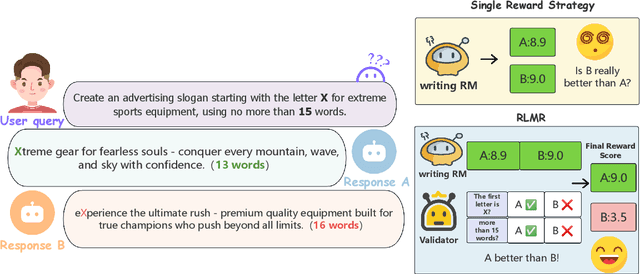
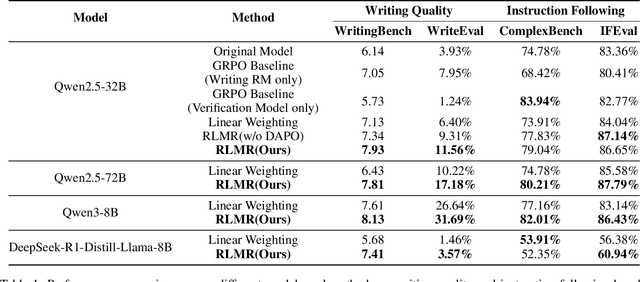
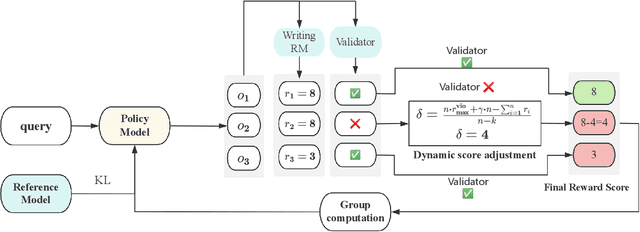
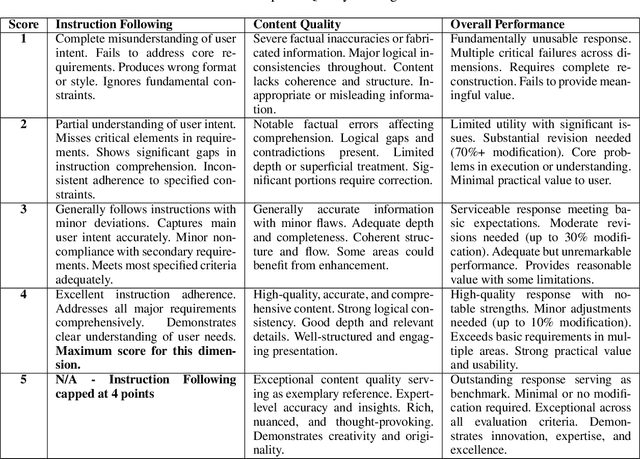
Abstract:Large language models are extensively utilized in creative writing applications. Creative writing requires a balance between subjective writing quality (e.g., literariness and emotional expression) and objective constraint following (e.g., format requirements and word limits). Existing methods find it difficult to balance these two aspects: single reward strategies fail to improve both abilities simultaneously, while fixed-weight mixed-reward methods lack the ability to adapt to different writing scenarios. To address this problem, we propose Reinforcement Learning with Mixed Rewards (RLMR), utilizing a dynamically mixed reward system from a writing reward model evaluating subjective writing quality and a constraint verification model assessing objective constraint following. The constraint following reward weight is adjusted dynamically according to the writing quality within sampled groups, ensuring that samples violating constraints get negative advantage in GRPO and thus penalized during training, which is the key innovation of this proposed method. We conduct automated and manual evaluations across diverse model families from 8B to 72B parameters. Additionally, we construct a real-world writing benchmark named WriteEval for comprehensive evaluation. Results illustrate that our method achieves consistent improvements in both instruction following (IFEval from 83.36% to 86.65%) and writing quality (72.75% win rate in manual expert pairwise evaluations on WriteEval). To the best of our knowledge, RLMR is the first work to combine subjective preferences with objective verification in online RL training, providing an effective solution for multi-dimensional creative writing optimization.
GLM-4.5: Agentic, Reasoning, and Coding (ARC) Foundation Models
Aug 08, 2025Abstract:We present GLM-4.5, an open-source Mixture-of-Experts (MoE) large language model with 355B total parameters and 32B activated parameters, featuring a hybrid reasoning method that supports both thinking and direct response modes. Through multi-stage training on 23T tokens and comprehensive post-training with expert model iteration and reinforcement learning, GLM-4.5 achieves strong performance across agentic, reasoning, and coding (ARC) tasks, scoring 70.1% on TAU-Bench, 91.0% on AIME 24, and 64.2% on SWE-bench Verified. With much fewer parameters than several competitors, GLM-4.5 ranks 3rd overall among all evaluated models and 2nd on agentic benchmarks. We release both GLM-4.5 (355B parameters) and a compact version, GLM-4.5-Air (106B parameters), to advance research in reasoning and agentic AI systems. Code, models, and more information are available at https://github.com/zai-org/GLM-4.5.
HPSS: Heuristic Prompting Strategy Search for LLM Evaluators
Feb 18, 2025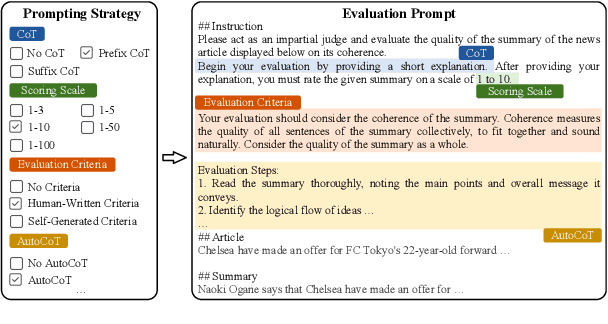
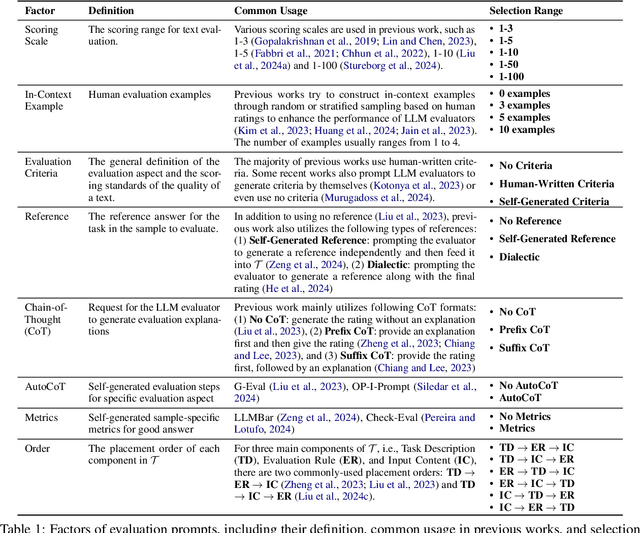
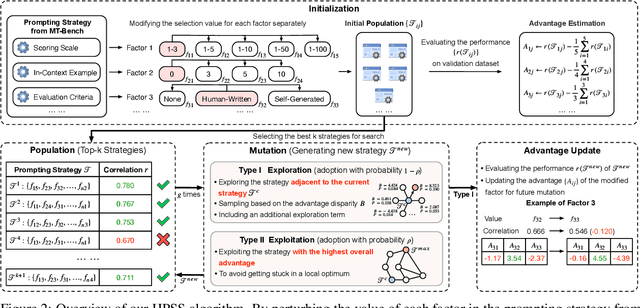
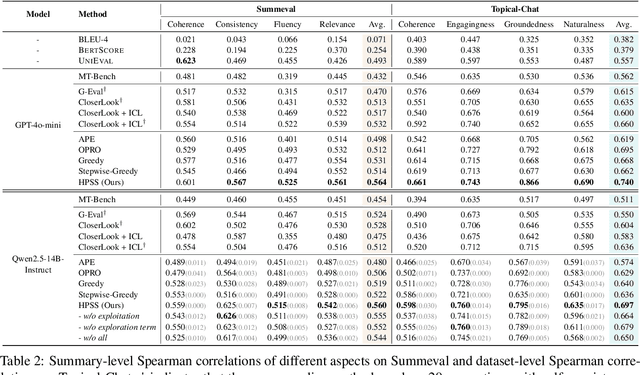
Abstract:Since the adoption of large language models (LLMs) for text evaluation has become increasingly prevalent in the field of natural language processing (NLP), a series of existing works attempt to optimize the prompts for LLM evaluators to improve their alignment with human judgment. However, their efforts are limited to optimizing individual factors of evaluation prompts, such as evaluation criteria or output formats, neglecting the combinatorial impact of multiple factors, which leads to insufficient optimization of the evaluation pipeline. Nevertheless, identifying well-behaved prompting strategies for adjusting multiple factors requires extensive enumeration. To this end, we comprehensively integrate 8 key factors for evaluation prompts and propose a novel automatic prompting strategy optimization method called Heuristic Prompting Strategy Search (HPSS). Inspired by the genetic algorithm, HPSS conducts an iterative search to find well-behaved prompting strategies for LLM evaluators. A heuristic function is employed to guide the search process, enhancing the performance of our algorithm. Extensive experiments across four evaluation tasks demonstrate the effectiveness of HPSS, consistently outperforming both human-designed evaluation prompts and existing automatic prompt optimization methods.
CharacterBench: Benchmarking Character Customization of Large Language Models
Dec 16, 2024



Abstract:Character-based dialogue (aka role-playing) enables users to freely customize characters for interaction, which often relies on LLMs, raising the need to evaluate LLMs' character customization capability. However, existing benchmarks fail to ensure a robust evaluation as they often only involve a single character category or evaluate limited dimensions. Moreover, the sparsity of character features in responses makes feature-focused generative evaluation both ineffective and inefficient. To address these issues, we propose CharacterBench, the largest bilingual generative benchmark, with 22,859 human-annotated samples covering 3,956 characters from 25 detailed character categories. We define 11 dimensions of 6 aspects, classified as sparse and dense dimensions based on whether character features evaluated by specific dimensions manifest in each response. We enable effective and efficient evaluation by crafting tailored queries for each dimension to induce characters' responses related to specific dimensions. Further, we develop CharacterJudge model for cost-effective and stable evaluations. Experiments show its superiority over SOTA automatic judges (e.g., GPT-4) and our benchmark's potential to optimize LLMs' character customization. Our repository is at https://github.com/thu-coai/CharacterBench.
Benchmarking Complex Instruction-Following with Multiple Constraints Composition
Jul 04, 2024



Abstract:Instruction following is one of the fundamental capabilities of large language models (LLMs). As the ability of LLMs is constantly improving, they have been increasingly applied to deal with complex human instructions in real-world scenarios. Therefore, how to evaluate the ability of complex instruction-following of LLMs has become a critical research problem. Existing benchmarks mainly focus on modeling different types of constraints in human instructions while neglecting the composition of different constraints, which is an indispensable constituent in complex instructions. To this end, we propose ComplexBench, a benchmark for comprehensively evaluating the ability of LLMs to follow complex instructions composed of multiple constraints. We propose a hierarchical taxonomy for complex instructions, including 4 constraint types, 19 constraint dimensions, and 4 composition types, and manually collect a high-quality dataset accordingly. To make the evaluation reliable, we augment LLM-based evaluators with rules to effectively verify whether generated texts can satisfy each constraint and composition. Furthermore, we obtain the final evaluation score based on the dependency structure determined by different composition types. ComplexBench identifies significant deficiencies in existing LLMs when dealing with complex instructions with multiple constraints composition.
ToMBench: Benchmarking Theory of Mind in Large Language Models
Feb 23, 2024Abstract:Theory of Mind (ToM) is the cognitive capability to perceive and ascribe mental states to oneself and others. Recent research has sparked a debate over whether large language models (LLMs) exhibit a form of ToM. However, existing ToM evaluations are hindered by challenges such as constrained scope, subjective judgment, and unintended contamination, yielding inadequate assessments. To address this gap, we introduce ToMBench with three key characteristics: a systematic evaluation framework encompassing 8 tasks and 31 abilities in social cognition, a multiple-choice question format to support automated and unbiased evaluation, and a build-from-scratch bilingual inventory to strictly avoid data leakage. Based on ToMBench, we conduct extensive experiments to evaluate the ToM performance of 10 popular LLMs across tasks and abilities. We find that even the most advanced LLMs like GPT-4 lag behind human performance by over 10% points, indicating that LLMs have not achieved a human-level theory of mind yet. Our aim with ToMBench is to enable an efficient and effective evaluation of LLMs' ToM capabilities, thereby facilitating the development of LLMs with inherent social intelligence.
AlignBench: Benchmarking Chinese Alignment of Large Language Models
Dec 05, 2023Abstract:Alignment has become a critical step for instruction-tuned Large Language Models (LLMs) to become helpful assistants. However, effective evaluation of alignment for emerging Chinese LLMs is still significantly lacking, calling for real-scenario grounded, open-ended, challenging and automatic evaluations tailored for alignment. To fill in this gap, we introduce AlignBench, a comprehensive multi-dimensional benchmark for evaluating LLMs' alignment in Chinese. Equipped with a human-in-the-loop data curation pipeline, our benchmark employs a rule-calibrated multi-dimensional LLM-as-Judge with Chain-of-Thought to generate explanations and final ratings as evaluations, ensuring high reliability and interpretability. Furthermore, we report AlignBench evaluated by CritiqueLLM, a dedicated Chinese evaluator LLM that recovers 95% of GPT-4's evaluation ability. We will provide public APIs for evaluating AlignBench with CritiqueLLM to facilitate the evaluation of LLMs' Chinese alignment. All evaluation codes, data, and LLM generations are available at \url{https://github.com/THUDM/AlignBench}.
CritiqueLLM: Scaling LLM-as-Critic for Effective and Explainable Evaluation of Large Language Model Generation
Nov 30, 2023Abstract:Since the natural language processing (NLP) community started to make large language models (LLMs), such as GPT-4, act as a critic to evaluate the quality of generated texts, most of them only train a critique generation model of a specific scale on specific datasets. We argue that a comprehensive investigation on the key factor of LLM-based evaluation models, such as scaling properties, is lacking, so that it is still inconclusive whether these models have potential to replace GPT-4's evaluation in practical scenarios. In this paper, we propose a new critique generation model called CritiqueLLM, which includes a dialogue-based prompting method for high-quality referenced / reference-free evaluation data. Experimental results show that our model can achieve comparable evaluation performance to GPT-4 especially in system-level correlations, and even outperform GPT-4 in 3 out of 8 tasks in a challenging reference-free setting. We conduct detailed analysis to show promising scaling properties of our model in the quality of generated critiques. We also demonstrate that our generated critiques can act as scalable feedback to directly improve the generation quality of LLMs.
CharacterGLM: Customizing Chinese Conversational AI Characters with Large Language Models
Nov 28, 2023



Abstract:In this paper, we present CharacterGLM, a series of models built upon ChatGLM, with model sizes ranging from 6B to 66B parameters. Our CharacterGLM is designed for generating Character-based Dialogues (CharacterDial), which aims to equip a conversational AI system with character customization for satisfying people's inherent social desires and emotional needs. On top of CharacterGLM, we can customize various AI characters or social agents by configuring their attributes (identities, interests, viewpoints, experiences, achievements, social relationships, etc.) and behaviors (linguistic features, emotional expressions, interaction patterns, etc.). Our model outperforms most mainstream close-source large langauge models, including the GPT series, especially in terms of consistency, human-likeness, and engagement according to manual evaluations. We will release our 6B version of CharacterGLM and a subset of training data to facilitate further research development in the direction of character-based dialogue generation.
EVA: An Open-Domain Chinese Dialogue System with Large-Scale Generative Pre-Training
Aug 03, 2021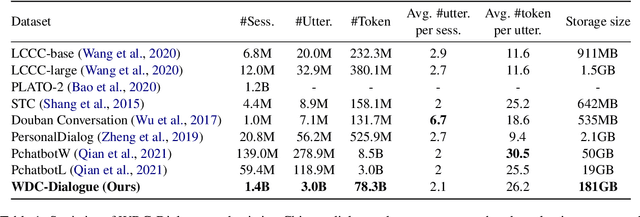
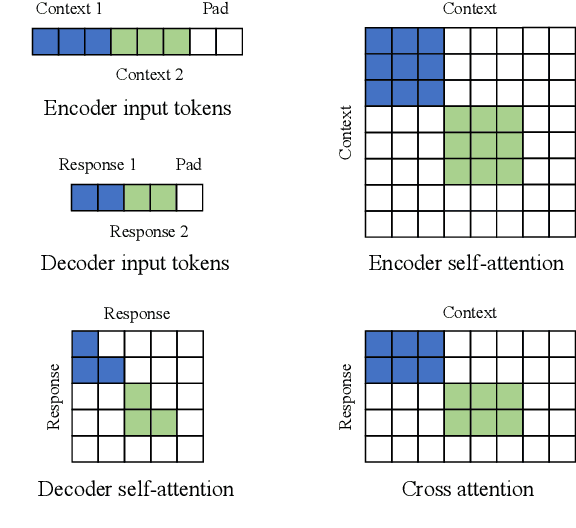

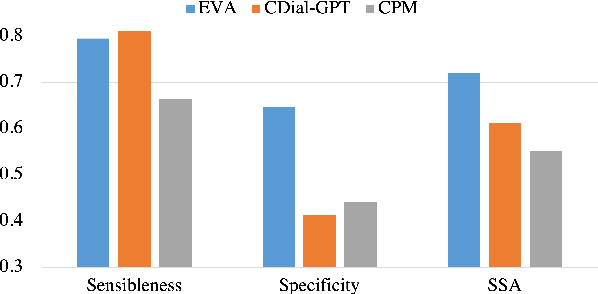
Abstract:Although pre-trained language models have remarkably enhanced the generation ability of dialogue systems, open-domain Chinese dialogue systems are still limited by the dialogue data and the model size compared with English ones. In this paper, we propose EVA, a Chinese dialogue system that contains the largest Chinese pre-trained dialogue model with 2.8B parameters. To build this model, we collect the largest Chinese dialogue dataset named WDC-Dialogue from various public social media. This dataset contains 1.4B context-response pairs and is used as the pre-training corpus of EVA. Extensive experiments on automatic and human evaluation show that EVA outperforms other Chinese pre-trained dialogue models especially in the multi-turn interaction of human-bot conversations.
 Add to Chrome
Add to Chrome Add to Firefox
Add to Firefox Add to Edge
Add to Edge